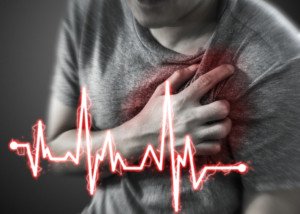
Yes, those who exercise can still get a heart attack, but at least this means they’re less likely to die from a heart attack when compared to sedentary people.
You can still get a heart attack despite exercising. However, it’s still your worthwhile—in a tremendous way—to make exercise a part of your life.
That’s because research shows a “dose-response” relationship between how much exercise a person has been doing, and the likelihood of surviving a heart attack.
And even though you can still suffer a heart attack despite being physically active, it’s well-established that exercise protects against cardiac events.
The study appears in the European Journal of Preventive Cardiology (April 2017).
How was the study on people done?
• The 14,223 participants of the Copenhagen City Heart Study were included.
• At the beginning of the study, none had a history of heart attack or stroke.
• Physical activity levels were grouped as sedentary, light, moderate or high.
• The study began between 1976 and 1978.
• Participants were followed through 2013; 1,664 had heart attacks; 425 died immediately.
The exercise levels of those with instant deaths was compared to those who survived.
Results of the Study
Heart attack patients with a history of light or moderate/high exercise were 32 percent and 47 percent, respectively, LESS likely to die from the event, when compared to sedentary subjects.
There was a dose-responsive relationship.
The odds of dying from a heart attack went DOWN as the level of exercise went UP.
There was about a 50 percent reduction of death in those who were the most active.
Why does exercise lower the odds of dying from a heart attack?

Freepik.com
The paper explains that exercise can develop collateral blood vessels in the heart.
Imagine the tube of a clogged pipe. Now imagine that thinner multiple pipes branch out of it, near the clogged portion, and then rejoin the main pipe a little bit after the clogged portion.
These are collateral pipes or pathways through which flow is established past the blockage.
This is what happens with collateral blood vessels in the heart. These adjunct blood vessels help supply the heart with oxygen even though a major artery is blocked with a clot.
Nevertheless, the paper also points out that the link between how much exercise one does and the survival odds for a heart attack is associative rather than causal.
In other words, is there something directly about exercise that increases the survival odds should that person suffer a heart attack?
Another point to consider is that the level of activity that was reported in this study was a subjective account by the participants.
We don’t know just what constituted “moderate” or “high” in this analysis.
We only know that, based on relative comparisons, “high” was correlated to the greatest chance of surviving a heart attack, and lack of exercise was linked to the lowest chance.
Maybe there were some marathon runners, mountain climbers and bodybuilders in that 14,223-people group.
But being that only a very tiny percentage of any random selection of 14,000 people would be marathon runners, mountain climbers, bodybuilders or triathletes, it’s logical to assume that this tiny percentage of truly “high” physical activity applied to the 14,223 participants.
Nevertheless, people who do what would be considered a lot of good exercise can still suffer a heart attack. Dr. Alvaro Waissbluth, a heart surgeon, explains how people can still have a heart attack without blocked arteries.


























